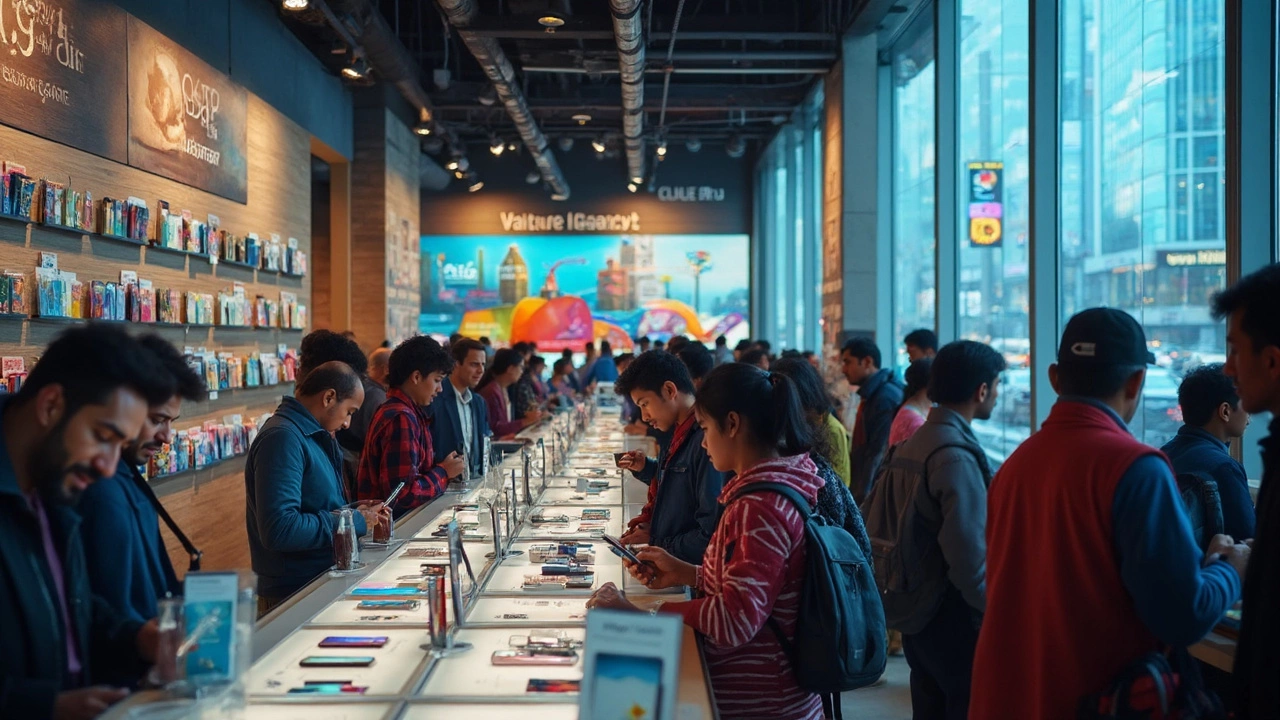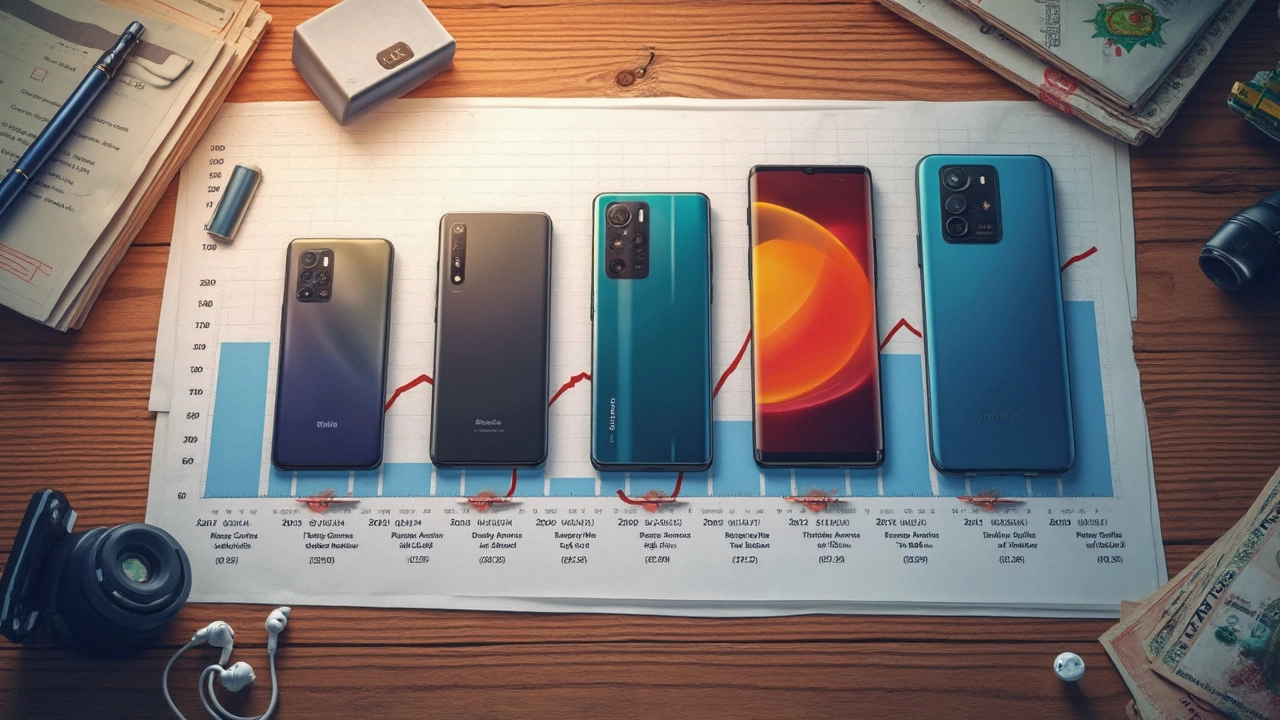
Ever wondered which phone brand actually sells the most devices around the world? It's not just a simple Apple vs. Samsung battle. The numbers show a real shift in the last couple of years, especially with some surprising names jumping into the top spots.
Most people just want a phone that takes great photos, lasts all day, and doesn't empty their wallet. But the real story behind the world's best-selling phone brand? It’s way more interesting than just a logo on the back. Price wars, software updates, and flashy new features are just the beginning.
If you're in the market for a new phone right now, knowing which brands top the sales charts can actually help you spot better deals, more reliable models, and even guess which tech will stick around. Trust me—my kids, Soren and Annelise, have put a few of these phones through some serious "kid testing" with drops, spills, and endless YouTube binges. And some brands just handle real life better than others.
- Who Tops the Global Sales Charts?
- Why This Brand Sells So Much
- Rising Challengers and Surprising Stats
- Tips for Picking the Right Phone Brand
Who Tops the Global Sales Charts?
So, which company actually sells the most phones worldwide in 2025? It’s not a trick question—Samsung still leads the pack in total units shipped. As of the latest stats from the first quarter of 2025, Samsung holds just under 21% of the global smartphone sales market. They move a huge range of phones, from entry-level Galaxies my kids love to high-end models like the S25 Ultra.
Apple is right behind. Yes, they dominate the premium market, basically owning the "over $500" segment with the iPhone 15 and 16 lines. But since Apple only makes a handful of models, overall global units put them in second place for sheer volume—just a few percent behind Samsung. Apple and Samsung swap these top spots in some regions, but worldwide, Samsung just edges out.
Want numbers? Here’s a handy breakdown for the most recent quarter (Q1 2025):
| Brand | Global Market Share (%) | Units Shipped (Millions) |
|---|---|---|
| Samsung | 20.7 | 61 |
| Apple | 17.8 | 52 |
| Xiaomi | 13.2 | 39 |
| Oppo | 9.9 | 29 |
| Transsion | 8.5 | 25 |
And then there are fast-charging, good-value brands like Xiaomi, Oppo, and Transsion (their Tecno and Infinix brands are everywhere in Africa and Southeast Asia). None have the same brand hype as Apple or Samsung, but they push out a ton of devices, often at wallet-friendly prices.
Bottom line: If all you care about is which phone brand sells the most devices, Samsung is on top right now. But the runner-ups are closer than you’d think, and the sales race is tighter every year.
Why This Brand Sells So Much
When it comes to the most sold phone brand around the globe, there's one name that’s snagged the top spot for years: Samsung. Last year alone, Samsung shipped over 250 million smartphones worldwide, leading the global phone market by a solid margin according to research firm Canalys. But what’s the real secret behind Samsung’s monster success?
The answer comes down to a few solid reasons:
- Huge Range: Samsung doesn’t just stick to $1,000 flagships like the Galaxy S24 Ultra. Their A-series and M-series grab a massive chunk of budget and mid-range buyers, especially in regions like India, Brazil, and Southeast Asia, where price matters most.
- Innovation: They actually push boundaries with stuff like foldables (the Galaxy Z Flip and Fold lines are everywhere now) and their gorgeous AMOLED screens, which you’ll struggle to find on cheaper models from other brands.
- Reliable Updates: Unlike a lot of lesser-known brands, Samsung has gotten serious about software. Most of their phones now promise at least 4 years of Android OS updates—meaning your phone won't feel outdated so fast.
- Strong Retail Presence: Walk into most electronics shops in Europe, Asia, or the US, and Samsung’s right at the front. They're everywhere, online and offline, making it an easy pick for millions of buyers who want to see and hold before they buy.
- Solid Cameras and Battery Life: Even the mid-level Samsungs often pack features people want, like reliable cameras and batteries that last all day, which helps them win over folks who just want a phone that works.
Here’s a quick look at how Samsung stacks up against other top smartphone brands in 2024 when it comes to shipments (in millions):
| Brand | 2024 Global Shipments (Millions) |
|---|---|
| Samsung | 253 |
| Apple | 224 |
| Xiaomi | 156 |
| OPPO | 103 |
| Transsion (Tecno, Infinix) | 98 |
So it’s not just about having a flashy flagship. Samsung stays on top by giving people choices, hitting all the important price points, and being everywhere buyers are. That’s the real formula behind owning the bragging rights as the most sold phone brand in the world.

Rising Challengers and Surprising Stats
If you think only Apple and Samsung are making waves in most sold phone brand lists, think again. Chinese brands are shaking up the global scene, and the numbers prove it. Take Xiaomi, for example. In 2024, Xiaomi shipped over 145 million smartphones worldwide, grabbing more than 12% of the global market. A few years ago, you might not have even heard the name unless you hung out on tech blogs.
Even bigger surprise? Transsion. It might not ring a bell, but if you’ve ever visited Africa or South Asia, you’ve probably noticed Tecno, Infinix, or Itel phones everywhere. Those all come from Transsion Holdings. In 2024, Transsion actually outsold Apple in total shipments for several quarters. Their phones focus on value—big batteries, loud speakers, dual SIMs—and that's exactly what people want in emerging markets.
Here’s a quick look at the worldwide smartphone sales leaderboard for late 2024:
| Brand | Shipments (Millions) | Market Share |
|---|---|---|
| Samsung | 259 | 20.2% |
| Apple | 230 | 18.0% |
| Xiaomi | 145 | 12.1% |
| Transsion | 104 | 8.3% |
| Oppo | 90 | 7.0% |
Notice how a couple years back, hardly anyone outside China talked about Transsion. Now they’re ahead of brands like Oppo and even closing in on Xiaomi’s numbers. That’s wild—and honestly, it means some of the top smartphone brands for 2025 might not even be big in the US or Europe yet, but they’re huge globally.
If you’re looking for a deal or want to try something different, don’t ignore these new players. Brands like Realme and Vivo are pumping out models that punch way above their price. These challengers are forcing older brands to up their game and drop prices, which is a win for anyone shopping for their next phone.
Tips for Picking the Right Phone Brand
Choosing the right phone brand isn’t just about following the crowd. It comes down to what you actually need day to day. There’s no point paying extra for features you’ll never use, or saving a few bucks up front if the phone will slow down in a year.
Start by thinking about your budget. Global data shows that mid-range smartphones ($300–$600) make up the biggest chunk of smartphone sales in 2024. Brands like Samsung and Xiaomi rule this category because they balance price and features better than anyone.
- Camera quality: If you’re snapping photos all the time (or your kids are like mine), compare each brand’s recent camera tests. For example, Google’s Pixel phones have the best AI photo tools—even on their cheaper models—while iPhones nail video recording every time.
- Battery life: Some brands are known for long-lasting batteries. Realme and Motorola models can hit two days between charges. But be wary of flashy claims—real-life use always drains batteries faster than lab tests suggest.
- Updates and support: Apple, Samsung, and Google all promise at least five years of software updates on their newest releases. Cheaper brands often skip updates, which means your phone can get buggy or even unsafe after just a couple years.
- Trade-in value: Apple leads here—iPhones keep their value longer, especially at resale. Samsung’s Galaxy S series is next best for holding decent value.
- Regional availability and repairs: Before you pick, check if the brand has local support. Some top-selling Chinese smartphone brands don’t have reliable repair shops or easy-to-find parts outside big cities.
Here's a quick look at top features from popular brands in 2024:
| Brand | Best For | Software Updates | Starting Price |
|---|---|---|---|
| Apple | Resale value, security | 5 years | $429 |
| Samsung | Display, versatility | 5 years | $299 |
| Xiaomi | Value, customizability | 3+ years | $199 |
| AI features, camera | 5 years | $349 |
If reviews seem confusing, look for posts from regular users, not just the big tech sites. Ask yourself: is this phone brand going to last (hardware and software)? Can you get it fixed nearby? Will it do what you use your phone for 90% of the time?